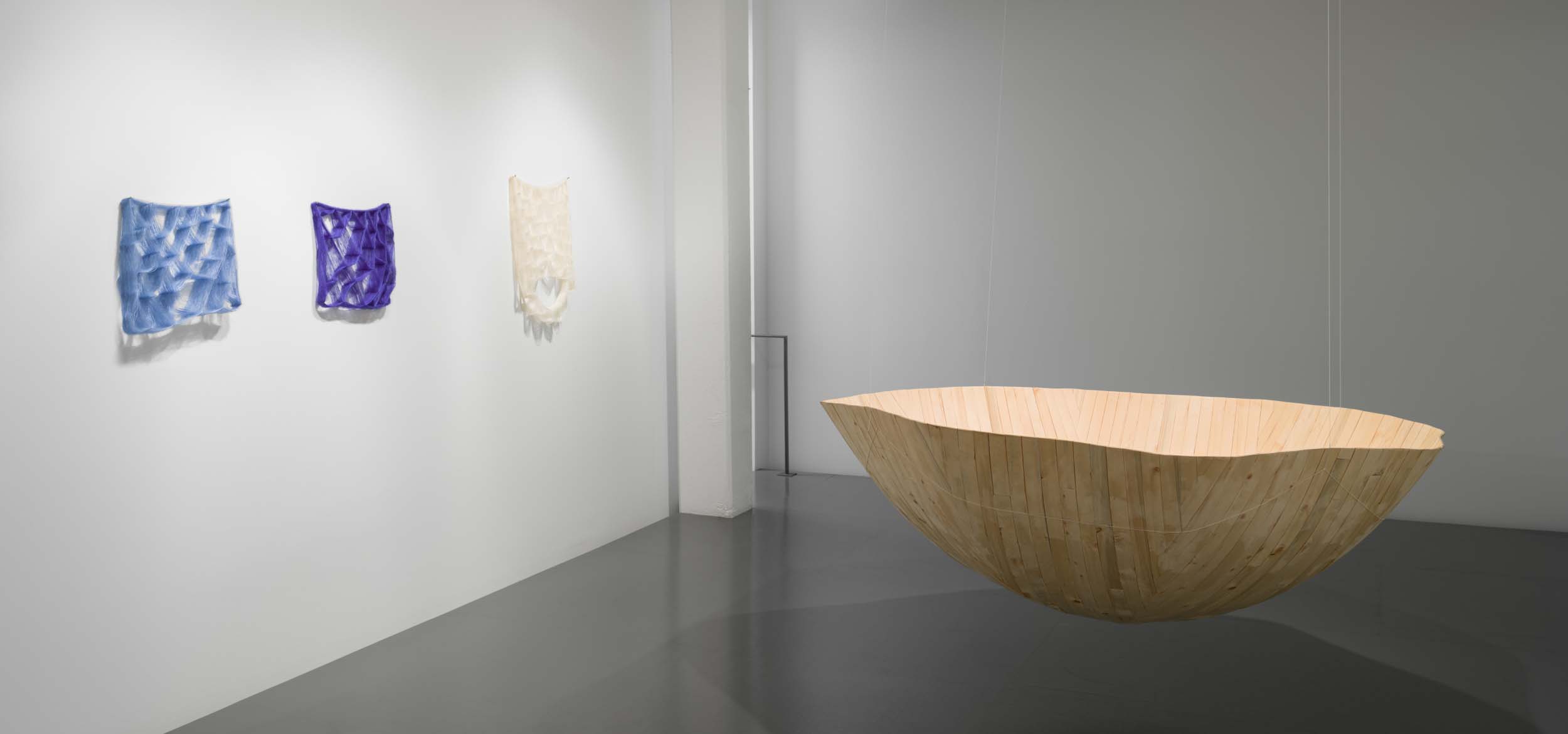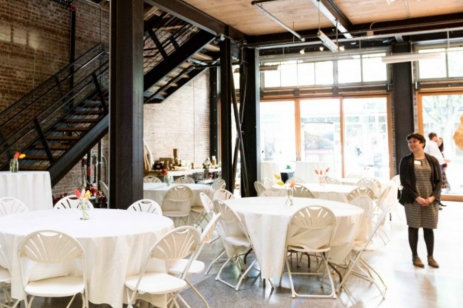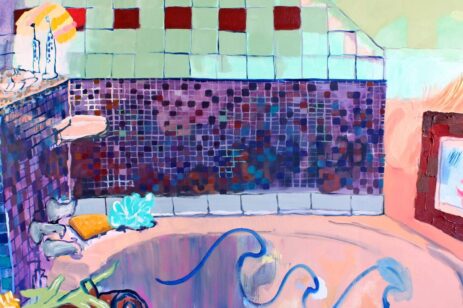In his MadArt Studio exhibition, (In)Form, Vashon-based artist Nate Clark employs laborious methods of creation to ground the viewer within their physical self.
Pulling inspiration from broad fields of study, such as architecture, animal behavioral science, literature, and the minimalist art movement, (In)Form reflects the deep research that drives Clark’s creative inquiry. His process-oriented practice and skilled craft can be seen through the various media incorporated into his works and the techniques he employed to bring this substantial installation to life. Immersive cedar sculptures with original percussive audio compositions, wool batting, beeswax, and wool that has been carded, spun, and woven by hand combine to create a multisensory viewing experience. Engaging viewers’ senses of smell, touch, sight, and hearing, Clark aims to foster an awareness of one’s body within and in relation to his works. This intention reflects Clark’s relationship to his practice, which he considers a mechanism to establish patience and tolerance within himself. Translated to a public audience, (In)Form’s sculptures are collectively presented as tools to cultivate mindfulness and promote bodily presence.
The central elements of this exhibition are the three Alaskan cedar domes that range in diameter from 10 to 16 feet. They are strategically positioned in relation to one another and within the studio to enhance or immobilize specific sounds. These works are a continuation of Clark’s solo exhibition, Squinch (4Culture, 2022), where he included his first hand-formed wooden dome, which spanned seven feet in diameter and produced unforeseen sonic qualities. At MadArt, he elaborates on this fortuitous discovery by working with two sound artists to further explore the auditory possibilities of his disc-shaped sculptures, and their impact on the viewer experience.
Clark creates these colossal works by taking inspiration from construction methods employed by Italian architect Brunelleschi in his Duomo, an architectural masterpiece built in the mid-1400s as part of the Florence Cathedral. In addition to the wooden bowls, he includes two textile works that structurally mimic the cedar bowls. Between the rear studio skylights hangs a whimsical net of white mohair and acrylic yarn that is activated by natural air flow, while the front half of the studio contains a suspended wool sculpture. Bisecting the studio and dampening transmittable sound, Clark hangs floor-to-ceiling wool batting along the back edge of the mezzanine. To facilitate movement between these two spaces he provides a navigable 12-foot-long cedar tunnel that bends at a 30 degree angle at the center, intentionally disrupting the full view through the pathway from either end. This experiential component reflects Clark’s admiration for animal behaviorist Temple Grandin and her invention of the “squeeze machine,” a tool she utilized to ground herself in moments of stress. Grandin applied these mechanics to a corral that herded animals to slaughterhouses, revolutionizing the humane treatment of livestock by creating systems of empathy within structures of control.
The materials and modes of making incorporated in this exhibition can’t be extracted from Clark’s rural life on Vashon Island, where he weathered the pandemic, adapted to a slower daily pace, and reconnected with the land through beekeeping, gardening, and harvesting wool from local farmers. Further, the inception of this body of work is attached to the beginning of the pandemic when Clark, like many others, was experiencing the societal, historical, and environmental traumas of our current world more acutely than ever before. These joining circumstances led the artist to turn towards his practice and create work that promotes contemplative space, patience, and tolerance through meticulous and laborious making. Through these time-consuming methods, Clark makes a connection between bodily presence and therapeutic healing practices that he hopes will translate to the viewer.



